Oak Savanna & Dunes
A second day at the Pinery, at the southern tip of Lake Huron. First hike of the morning is to the Black and White Oak Savanna (apparently one of the rarest habitats in North America) and the dunes. It is a 2.3km circular trail, with the option of shooting off for a 1km hike through the dunes halfway through the loop...who'd say no to another trip to the beach?

This was a beautiful walk, especially early in the morning before anyone else was on the trails. The oak savanna has such an open prairie feel, with skyscraping canopies of oak, almost like the rainforest, minus everything in between the ferns and the top canopy. The little booklet says it's considered to be a transition zone between western prairies and eastern deciduous forests; regular fires help keep it that way. Around here, we are more used to the dense bush of maples, ash, beech etc. This was a different animal of forest.
These oak galls below develop when a parthenogenetic gall wasp chemically induces the oak leaf buds to form a 'marble' growth. This is where the cunning wasp lays his eggs. Kind of spongy inside.



 ">
">
Lithospermum caroliniense (Yellow Puccoon) is the poster child of the dunes. Bits of it were found in clearings, but it was so bright and perfect you couldn't miss it if you tried.

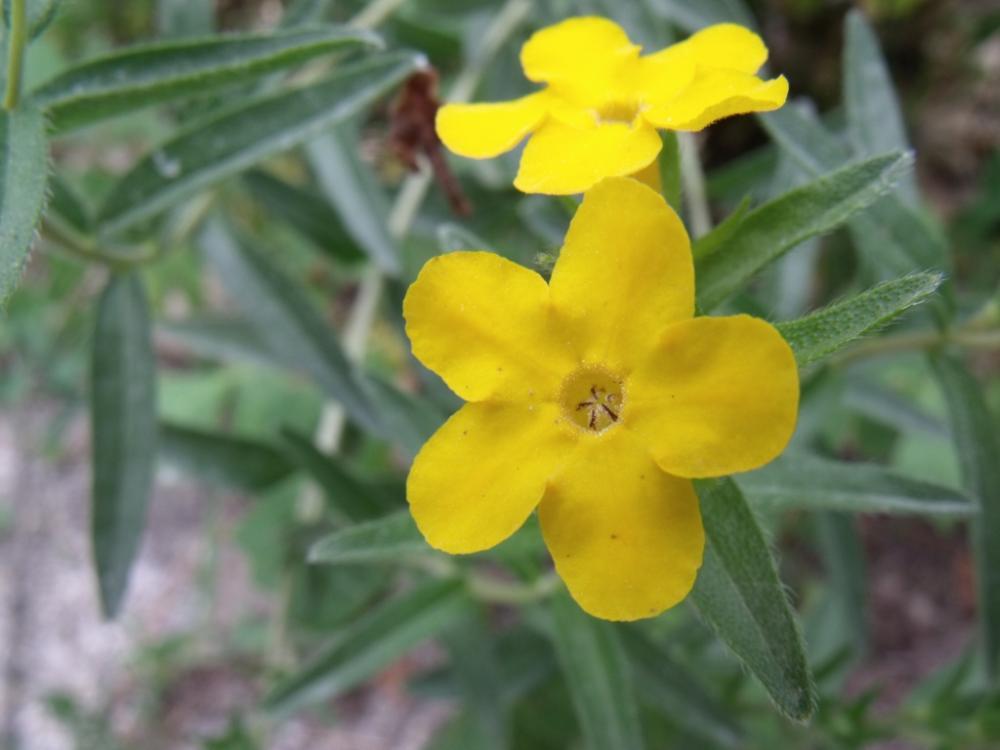 ">
">
Campanula rotundifolia


Asclepia tuberosa
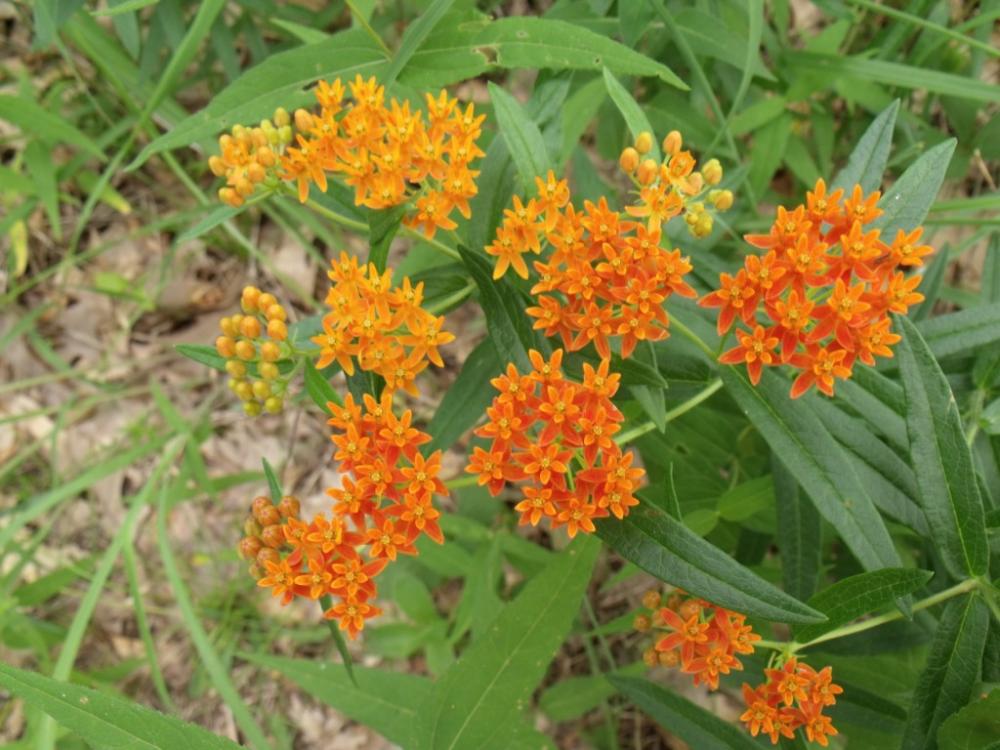

Prunella vulgaris ssp. vulgaris, the common self heal. But really, in the right place, it looks quite exotic, not weedy.
This pathway cuts along the side of one of the many old rolling sand dunes that are ~15m high. Temperatures and moisture conditions vary from the peak to the base of the hills and hollows, creating different microhabitats for both plants and animals...and I guess fungus too.
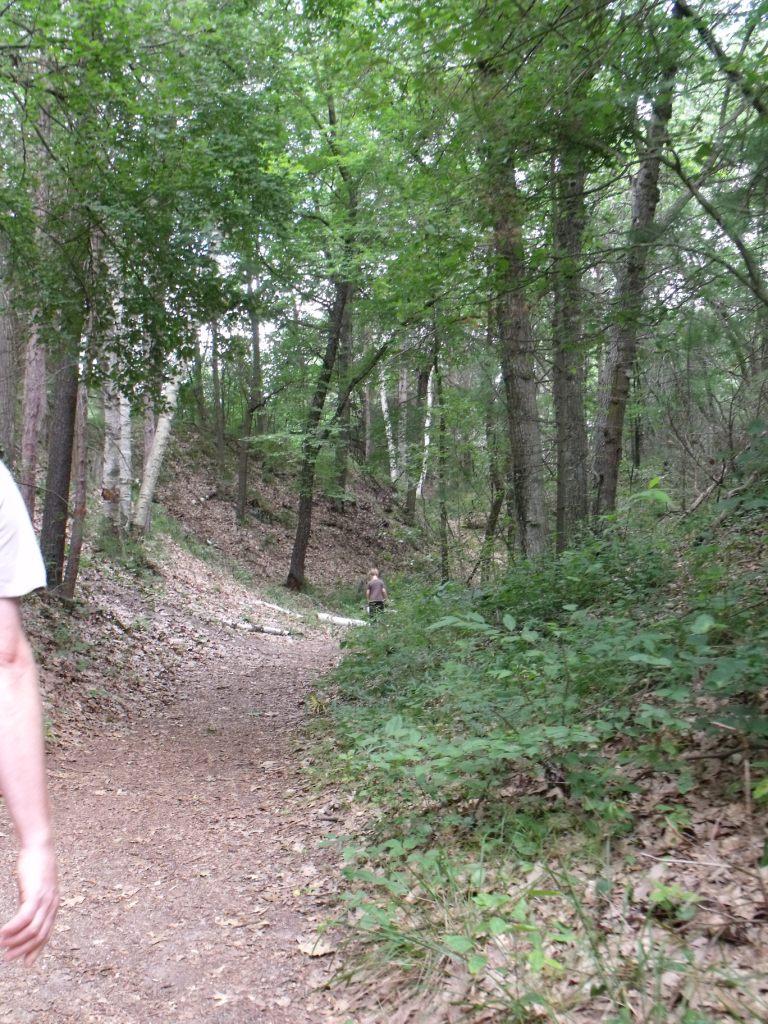

This picture is exactly how the oak savanna feels- almost like you are in a green bubble.

We veered off onto the sand dune trail. As the trees disappeared the plant life changed too.

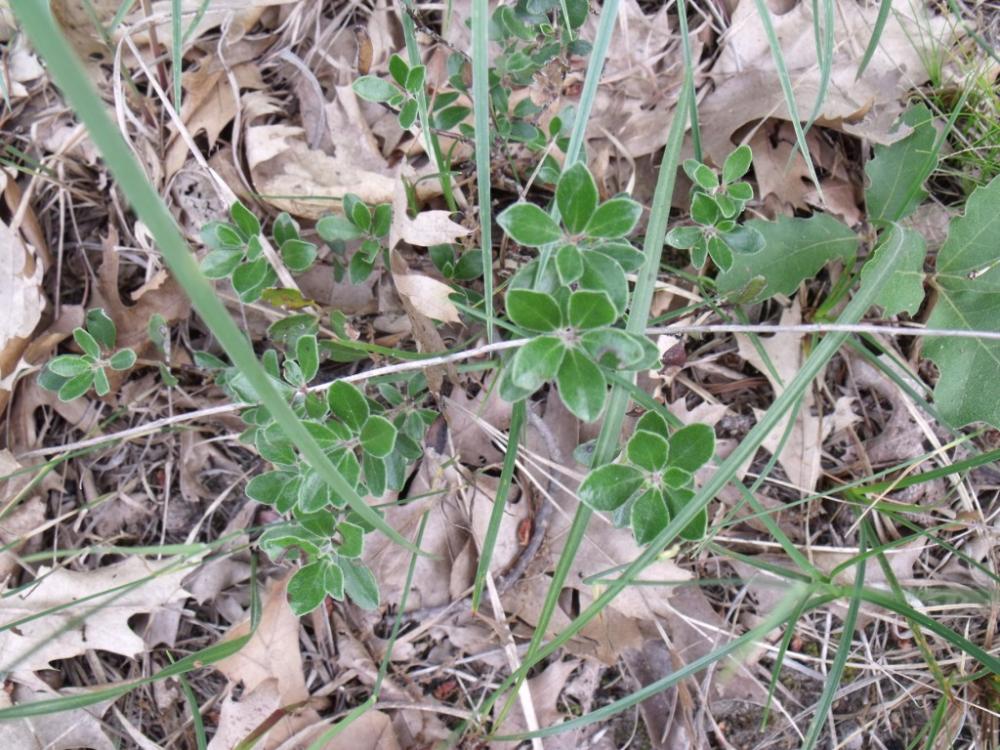
The dunes had mats of Arctostaphylos uva-ursi and grasses. I don't know my grasses but it was clear there was a huge variety.

The green patch below was along a the path through the dunes. I thought it was a huge patch of oak seedlings. Then (after I had touched the leaves) I wondered if it was what people call 'poison oak' (poison ivy paranoia setting in). So I took a picture and see now that it is an oak tree/shrub - really. The Dwarf Chinquapin Oak (Quercus prinoides) is rare in Canada- cute little bundle, eh? Not at all like the massive mighty oaks in the rest of the savanna.
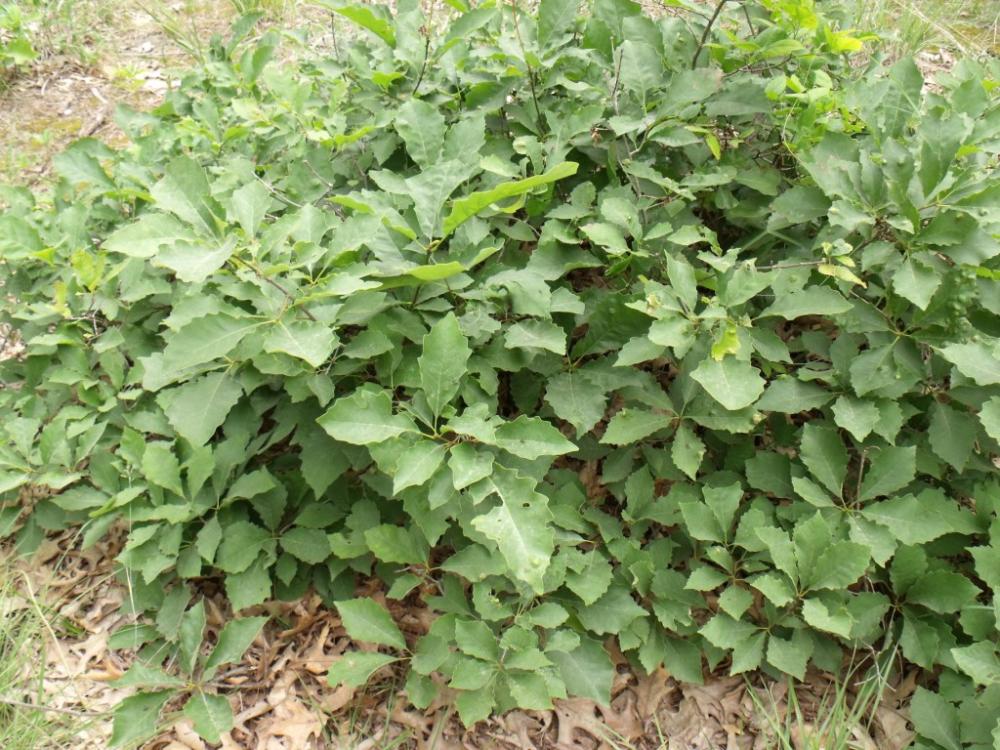
Further up the path we came right out onto great Lake Huron.


Such crazy contrast of the moonscape dunes and the frothing lake.


This little patch of beach had the most amazing pre-tumbled rocks - Thomas was going nuts picking through them - even some beautiful fossils in the mix.
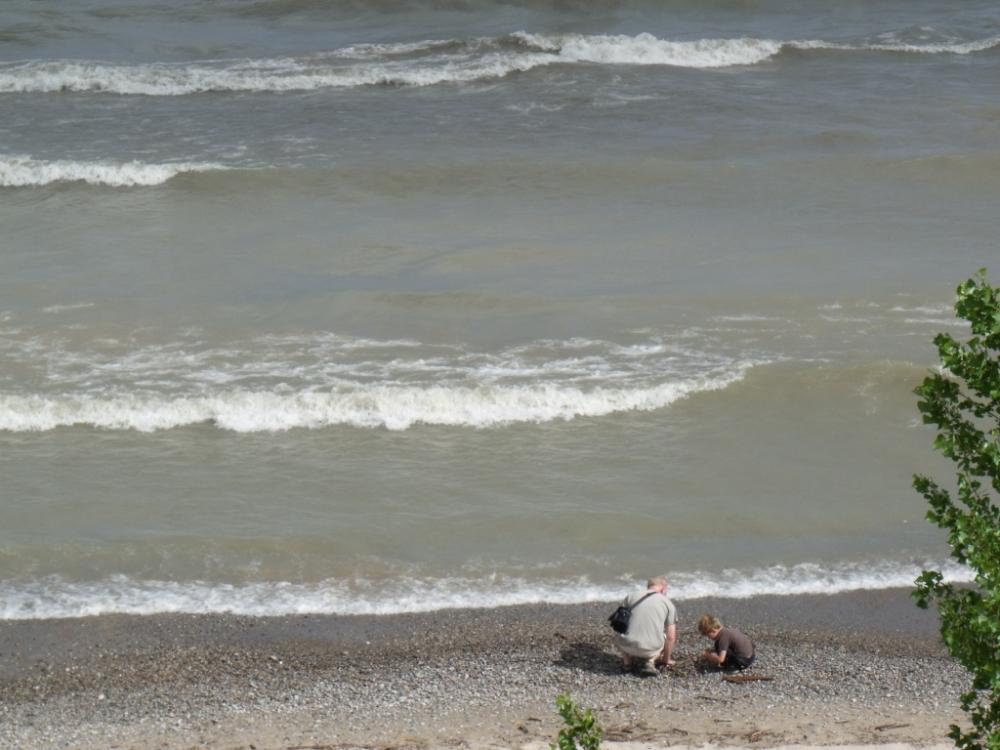

Moments like this always make me wonder "where is everybody?"... not that I want a beach full of people, but for a park with 1000 full camping spots you'd think there would be more than us and several other people strolling with the waves. Maybe they were all still asleep.


The trip back took us through the second half of the loop, which we thought would be the same as the first half -- but wasn't.
Yes there were the same huge black oaks (Quercus velutina). These and the Eastern red cedar (Juniperus virginiana) are the indicator species for this dry savanna.
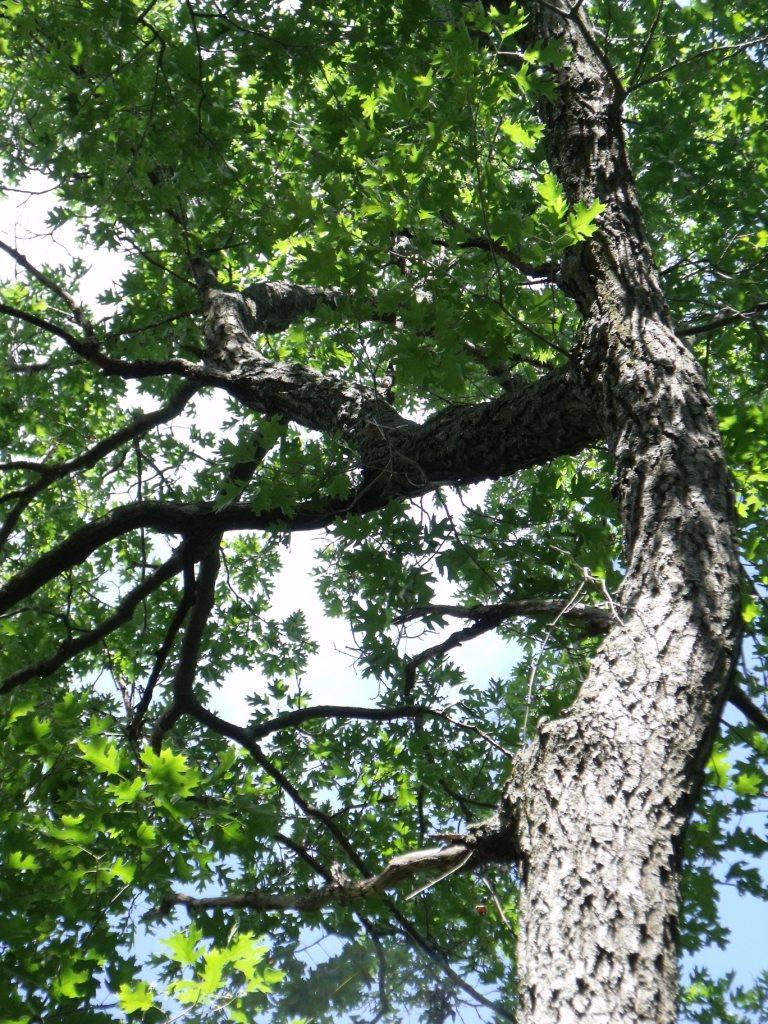

But then we saw this. Oh. I love the colour of Asclepias tuberosa, but these clusters of butterflies just set it off. I had to tell the others to go on ahead, I needed a few moments with these little guys and my camera. At home I looked it up in the Butterflies of Canada book. At first glance the hairstreaks all look the same. I figured it would just be the most common one because there were so many of them. But since the dots on the underwings were strongly offset, and the blue dot was longer than the orange dot beside it (this is almost worse then identifying plants), this pointed it to the Hickory Hairstreak (Satyrium caryaevorum), which happens to be rare in Ontario. Of course there's a good chance I'm wrong and it's the Banded Hairstreak, but I'm getting cross eyed looking at all the dots and lines!
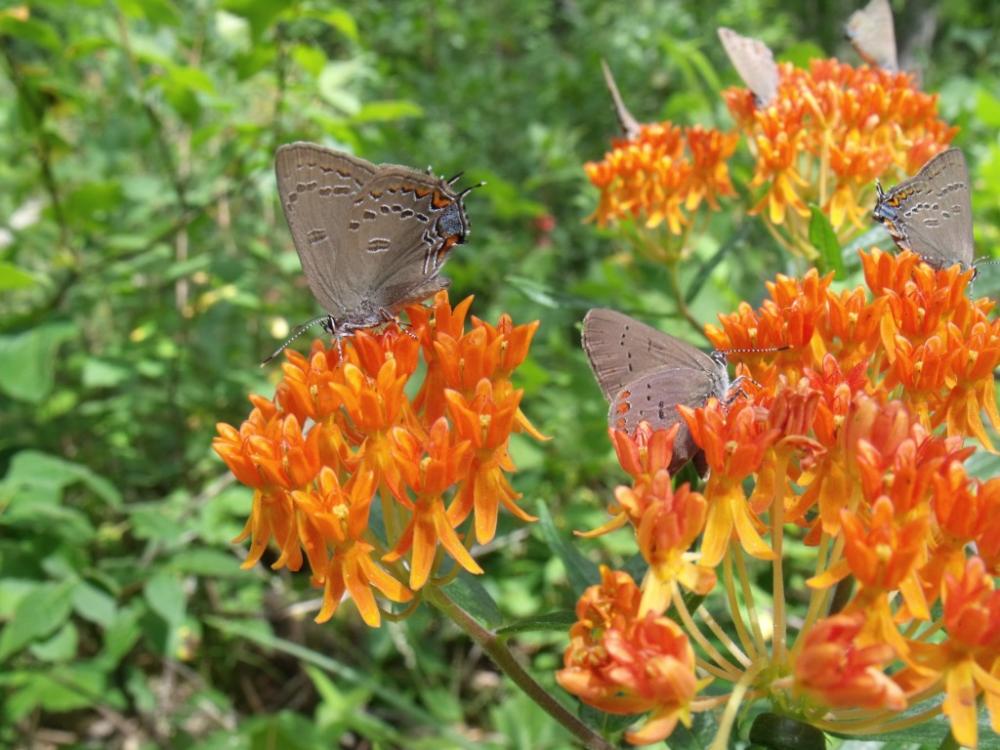
Meanwhile Thomas had found the Aquilegia canadensis...just one flower in our whole trip, everything else was dried up brown seedpods. Like a soft cotton summer dress, isn't it? We walked a half minute more and there was a pink flower about 5 metres back from the path. It was so pink. Dan offered to tip toe around the poison ivy, take a picture and bring it back to me. Soooo... this pretty pure pink flower was.... a leaf....an A. candensis leaf. OK, Hard not to laugh...


Some decorative stripes of fungus along the trunk. A lookout onto the Ausable River Channel.


Centaurea maculosa (Spotted Knapweed) was sprinkled along the roadsides too, which would be great I guess, if it wasn't an invasive species.

Polygala polygama (Racemed Milkwort) caught my eye at the very end of the trail. It was only about 15cm high - it seemed almost alpine! Apparently it likes the sandy woods and open clearings, which is exactly what it had here in the Pinery.


Comments (0)
Add new comment